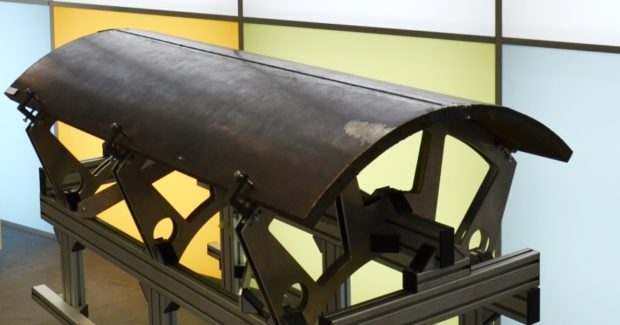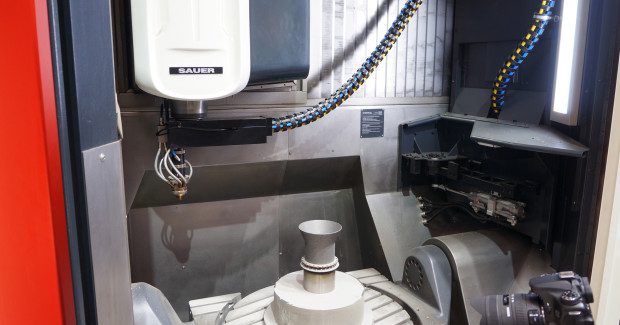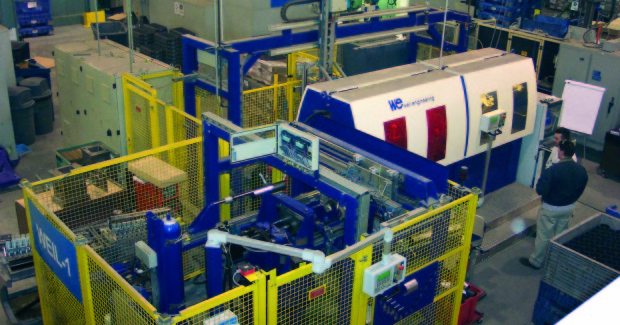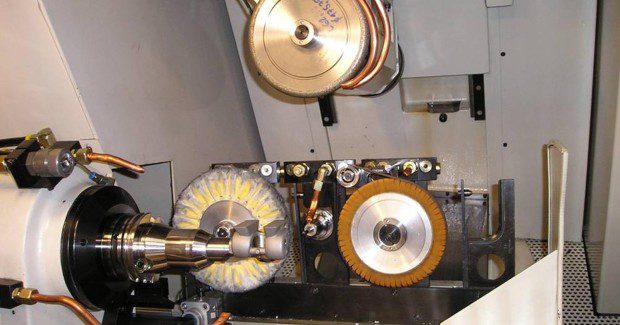Hybrid Machine, Standard CNC
As the era of additive/subtractive machine tools emerges, Randy Pearson of Siemens Industry explains how today’s controls are well suited to handle the challenges.
Posted: August 1, 2014
With IMTS on the horizon, I thought this might be a good time to do a little crystal ball gazing, though everything you’re about to read will be at the show to see, to touch and, perhaps, even to buy.
With the emergence of additive machining over a decade ago, the technology quickly became a prototyping marvel. As design changes were made, the result could be quickly visualized into a 3D solid part. Manufacturing also appreciated the tool because it enabled them to see potential process problems in the actual cutting of the part, meaning modifications could be made on the fly without part functionality being compromised. Lastly, for the estimators, this tool allowed substantially better quote preparation.
Then it happened.
Siemens takes a look into the future of machining, manufacturing and IT infrastructure at the factory of tomorrow.
The materials being used for 3D printing evolved at light speed and the market quickly realized this technology had production potential. Making a short run of parts on such a machine became a reality. While 3D printing machines are still five to ten years away from being everyday shop production units, according to the best industry sources, another development in the fusion of additive and subtractive technologies has created a new generation of hybrid machine tools where seemingly incompatible technologies such as laser metal deposition and chip cutting machines have emerged. (This is Fabricating & Metalworking at its core!)
Patiently standing by, existing and standard CNC technology has been implemented on these machines. Whether the parameters involve laser gases, powdered metal deposition and inert atmosphere vacuum or five-axis rotation of a milling head or rotary table, the function of the control remains nearly identical. In this way, a single control can run two varying technologies for both fabrication and machining, either on a single channel or on a two-channel unit, often in tandem with a robot head or gantry for part articulations.
When that technology was introduced to the market two years ago at the last IMTS, running a lathe and a robot on the same CNC was already possible, without the need for a secondary PLC and “unique” robot language commands. Now all of this goes to the next level as additive and subtractive technologies are joined on the same machine.
That’s not all. It gets better.
Parts made from titanium, stainless or disparate powdered metals are being built up, joined, machined or otherwise processed on these machines – today. Driven gears, for example, are now laser welded from machined and stamped components into a single assembly.
The CNC, when controlling these radically different machine operations, utilizes a modified set of code but not a different language, as was necessary previously with robotic integration. Since advanced CNC units carry a secondary channel, the commands can easily be set up there, if not incorporated into the main channel. It all depends on the complexity of the motion and the total number of parameters being controlled. The simultaneous control and monitoring of laser metal deposition and five-axis milling functions actually present little challenge to the high-end CNC on the market today.
I cannot begin to know where things are headed from here, but the next decade will surely be an exciting and game-changing time in the machine tool and fabrication world. Just remember this: CNC is in control. See you in Chicago!















